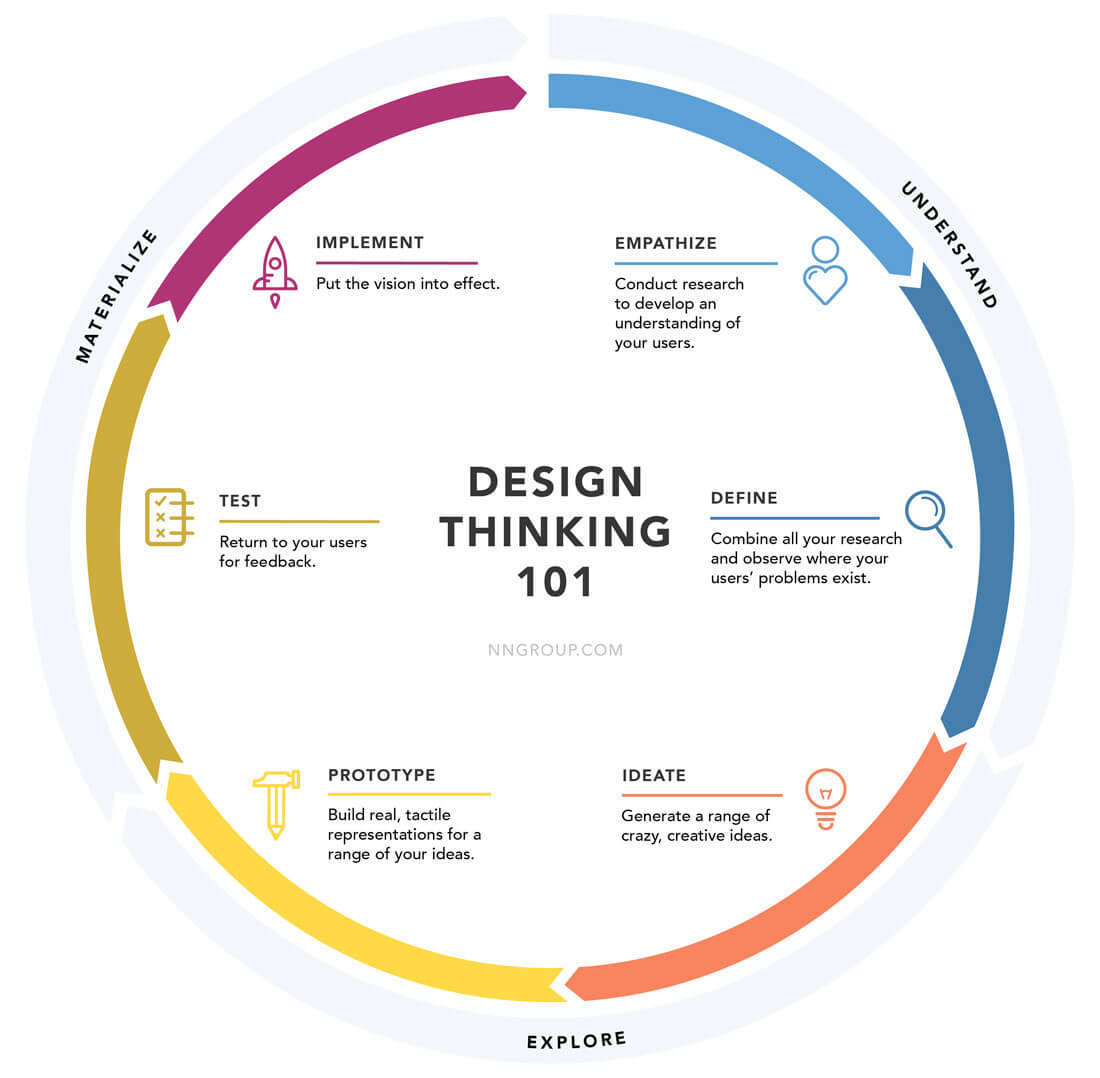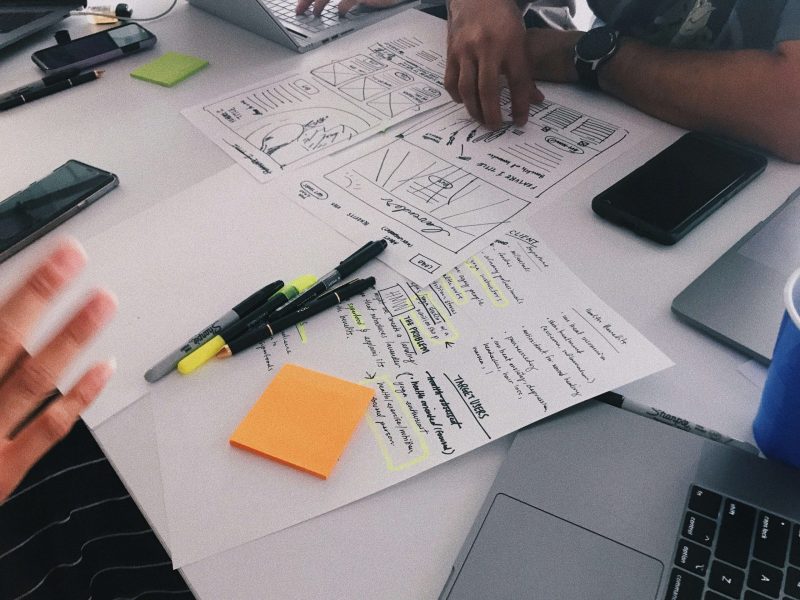Design Thinking is a human-centered methodology that empowers teams to solve complex problems through creativity, empathy, and iterative learning.
Rooted in disciplines like UX design and systems thinking, it bridges the gap between user needs and business goals. According to the Stanford d.school, Design Thinking is “a methodology for innovation that combines creative and analytical approaches.”
Why Design Thinking Matters
- 71% of organizations report that Design Thinking improves their collaboration and innovation processes.
- Companies like Apple, Airbnb, and IBM attribute their success to user-centric frameworks.
The Design Thinking Framework (NNgroup Model)
The NNgroup outlines a 7-phase process:
- Empathize
- Define
- Ideate
- Prototype
- Test
- Implement
- Explore
Unlike linear models, this framework emphasizes iteration. Teams may revisit phases to refine solutions.
Phase 1: Empathize – Understanding User Needs
Empathy is the cornerstone of Design Thinking. This phase involves immersive research to uncover user pain points, motivations, and behaviors.
Methods
- User Interviews: Conduct 1:1 sessions to gather qualitative insights. Learn how to structure interviews via NNgroup’s Guide.
- Empathy Mapping: Visualize user attitudes and experiences using templates from Interaction Design Foundation.
- Ethnographic Studies: Observe users in their natural environment.
Case Study: Airbnb redesigned its platform after founders stayed with hosts to empathize with their struggles (Harvard Business Review).
Phase 2: Define – Crafting the Problem Statement
Synthesize research data to pinpoint the core problem. A well-defined problem statement guides ideation.
Key Deliverables
- User Personas: Semi-fictional profiles representing target users. Use HubSpot’s Template.
- User Journey Maps: Visualize user interactions across touchpoints.
Example: Uber Eats uses journey mapping to identify friction points in food delivery (NNgroup Case Study).
Phase 3: Ideate – Unleashing Creativity
Generate diverse ideas without judgment. Techniques include:
- Brainstorming: Encourage “crazy ideas” to spark innovation.
- SCAMPER: A framework for lateral thinking (MindTools).
- Worst Possible Idea: Reverse thinking to bypass mental blocks.
Tool Recommendation: Use Miro for collaborative ideation.
Phase 4: Prototype – Bringing Ideas to Life
Prototypes range from paper sketches to interactive digital mockups.
Types of Prototypes
- Low-Fidelity: Quick, disposable drafts (e.g., paper prototypes).
- High-Fidelity: Functional models using tools like Figma or InVision.
Case Study: Dropbox validated its MVP with a video prototype, leading to a 10x waitlist increase (Fast Company).
Phase 5: Test – Validating with Users
Testing uncovers usability issues and refines solutions.
Methods
- A/B Testing: Compare design variations.
- Usability Testing: Observe users interacting with prototypes. Learn best practices from Usability.gov.
Pro Tip: Iterate based on feedback. As NNgroup notes, “Testing one user is 100% better than testing none.”
Phase 6: Implement – Executing the Vision
Transition prototypes to final products. Collaboration with developers is critical.
Agile Integration
- Use tools like Jira to align design and development sprints.
- Design Systems: Maintain consistency with platforms like Storybook.
Example: IBM’s Design Language System scaled their product ecosystem (IBM Case Study).
Phase 7: Explore – Continuous Innovation
Design Thinking doesn’t end at launch. Explore new markets, features, or user segments.
Strategies
- Post-Launch Analytics: Monitor metrics via Google Analytics.
- Pilot Programs: Test expansions in controlled environments.
Case Study: Spotify’s “Discover Weekly” leveraged user data to explore personalized content (Wired).
Best Practices & Common Pitfalls
Do’s
- Involve stakeholders early.
- Prioritize user feedback over assumptions.
Don’ts
- Skip empathy research.
- Overcomplicate prototypes.
Read More: IDEO’s Design Thinking Tips.
Tools & Resources
Courses:
Conclusion – The Future of Design Thinking <a name=”conclusion”></a>
Design Thinking is evolving with AI, AR, and data-driven insights. However, its core—empathy, and iteration—remains timeless. As Tim Brown, CEO of IDEO, states:
“Design Thinking is a human-centered approach to innovation that draws from the designer’s toolkit to integrate the needs of people, the possibilities of technology, and the requirements for business success.”


